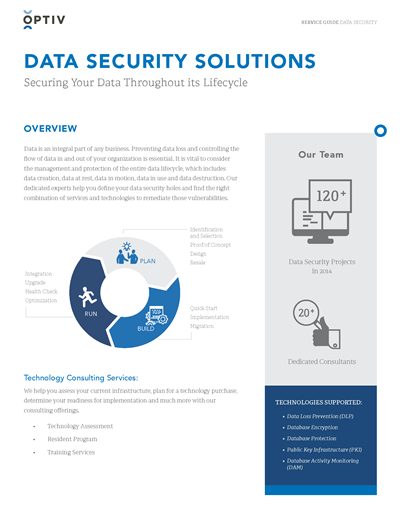The Relevance of Effective Information Devastation Practices in Shielding Sensitive Information and Ensuring Computer Safety And Security
In an era where information breaches are increasingly typical, the significance of reliable data devastation techniques can not be overstated. Applying robust information damage methods not just alleviates these risks however likewise lines up with lawful conformity demands, making sure that organizations copyright their online reputation and foster customer depend on.
Recognizing Information Damage
Understanding information devastation is critical in today's digital landscape, where delicate info can easily be jeopardized. Effective data devastation entails not merely erasing documents yet guaranteeing that data is irretrievable with extensive methods. This process is crucial for organizations that handle confidential client info, intellectual home, or internal papers, as any breach can result in serious monetary and reputational effects.
Information devastation includes various techniques, including shredding physical media, degaussing magnetic storage space tools, and using software-based remedies that overwrite information several times. Each method serves a particular purpose and must straighten with the level of sensitivity of the details being thrown away. Physical devastation is usually preferred for difficult drives including very private data, while software techniques could be enough for much less sensitive information.
Additionally, adhering to sector requirements and regulations, such as the General Data Protection Law (GDPR) or the Health And Wellness Insurance Coverage Transportability and Liability Act (HIPAA), is imperative for conformity and to mitigate lawful dangers. Organizations must establish a robust data devastation plan, train staff members on finest methods, and regularly examine their procedures to make sure that all delicate information is disposed of safely and efficiently.
Dangers of Inadequate Practices
Poor data damage techniques expose organizations to considerable dangers that can have significant effects. When sensitive information is not appropriately dealt with, it remains prone to unauthorized accessibility, which can cause information breaches and identity burglary. Such incidents not only compromise the safety of people yet additionally tarnish the organization's track record, causing a loss of consumer trust fund and possible economic effects.
In addition, regulatory compliance is increasingly strict in lots of sectors. Failing to stick to information destruction policies can result in substantial penalties and lawsuits versus organizations. These penalties can strain funds and draw away attention from core company operations.
Furthermore, the abuse of residual information can bring about intellectual building burglary or business espionage, threatening affordable advantages (data destruction). The influence of poor data damage expands past instant financial losses; it can also cause long-lasting damage to brand stability and market setting

Organizations should recognize that information safety and security is not solely regarding avoiding breaches; it also includes the responsible monitoring of data throughout its lifecycle. Neglecting reliable data damage protocols can have devastating effects, highlighting the necessity for robust actions to reduce these threats.
Ideal Practices for Data Damage
Implementing efficient information destruction practices is important for protecting delicate information and preserving conformity with regulatory requirements. Organizations should adopt a multi-faceted strategy to make sure that information is irretrievable, thus avoiding unauthorized accessibility and potential breaches.
First, data ought to be classified based upon level of sensitivity, allowing organizations to apply proper devastation methods customized to the degree of danger. For digital information, making use of software-based data-wiping tools that abide by sector criteria can efficiently overwrite existing data. Physical damage techniques, such as shredding or degaussing, are crucial for devices that store sensitive info, making certain total elimination.
Developing a clear data retention plan is vital, describing the length of time different kinds of details should be kept before destruction. Normal audits of information storage space systems are likewise required to identify outdated or unneeded data requiring removal.
Furthermore, training staff members on the significance of data damage and the particular site here procedures to follow fosters a society of security within the organization. Maintaining documentation of information devastation refines supplies accountability and sustains compliance with internal plans and outside policies. By adhering to these ideal methods, companies can significantly minimize the risks connected with data direct exposure.
Legal and Compliance Factors To Consider

Failing to follow these policies can cause extreme fines, consisting of significant penalties and reputational damages. Organizations has to implement a robust data damage policy that lines up with these lawful structures and gives clear standards on the correct methods of data disposal, whether physical shredding or digital cleaning.
Additionally, preserving paperwork of information devastation tasks is vital for showing conformity during audits or inspections. By prioritizing lawful and conformity considerations, organizations can boost their data safety Click Here and security stance and foster trust with clients and stakeholders, eventually adding to a more secure information administration environment.
Benefits of Effective Information Damage
Effective information damage practices extend beyond plain compliance; they provide significant benefits to organizations that prioritize them. By guaranteeing that sensitive info is irretrievably destroyed, companies reduce the risk of data violations and the prospective financial effects connected with them. This proactive technique not just safeguards versus unauthorized access however also improves the overall trustworthiness of the company in the eyes of stakeholders and customers.
Carrying out robust information damage methods, such as physical damage of storage space gadgets or innovative data cleaning techniques, adds to the conditioning of a company's cybersecurity posture. data destruction. It lowers the probability of copyright theft and shields proprietary info, thereby preserving an affordable side in the marketplace

Conclusion
In verdict, efficient information damage practices are essential for safeguarding delicate info and enhancing general computer safety. By applying extensive methods such as software program, shredding, and degaussing overwriting, organizations can reduce the risks related to unapproved gain access to and information violations. Adherence to governing standards, including GDPR and HIPAA, additional strengthens conformity and safeguards versus lawful effects. Inevitably, a commitment to robust data damage strategies fosters a culture of obligation, therefore strengthening an organization's cybersecurity position and preserving customer trust fund.
